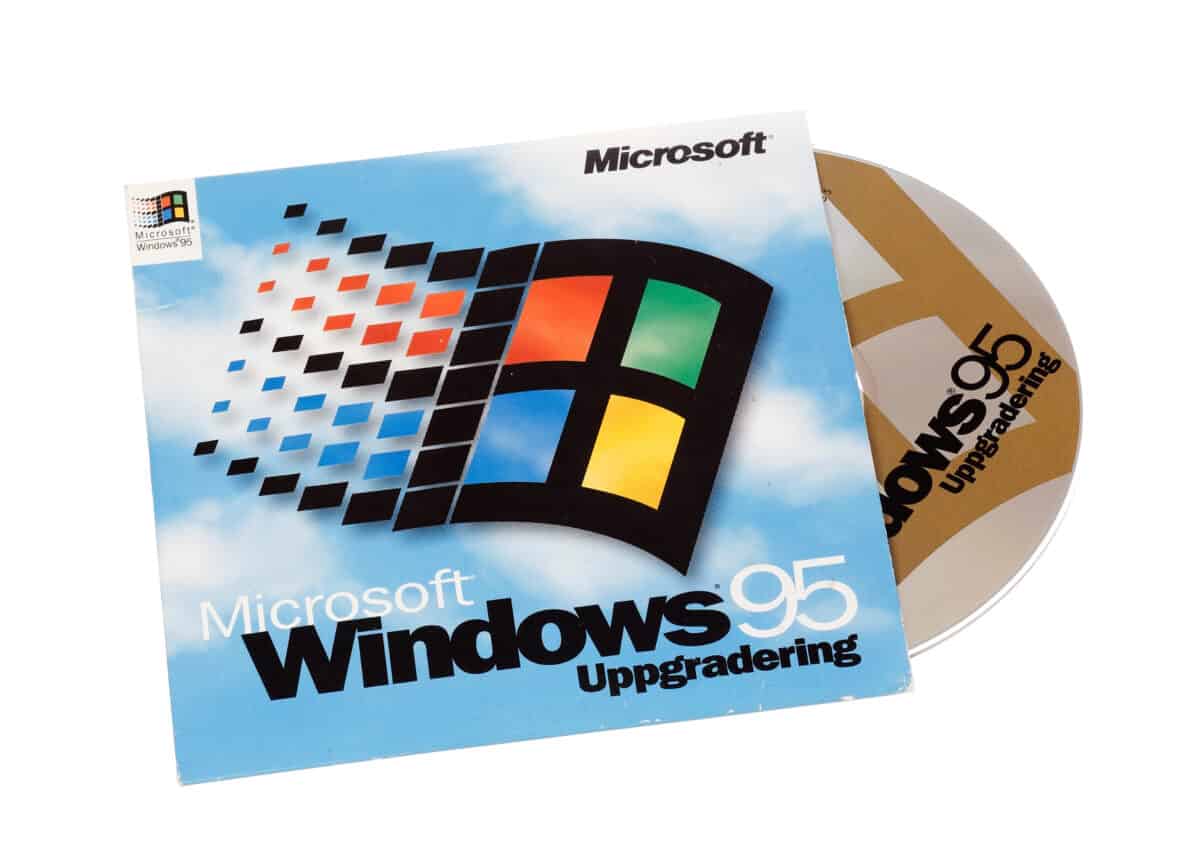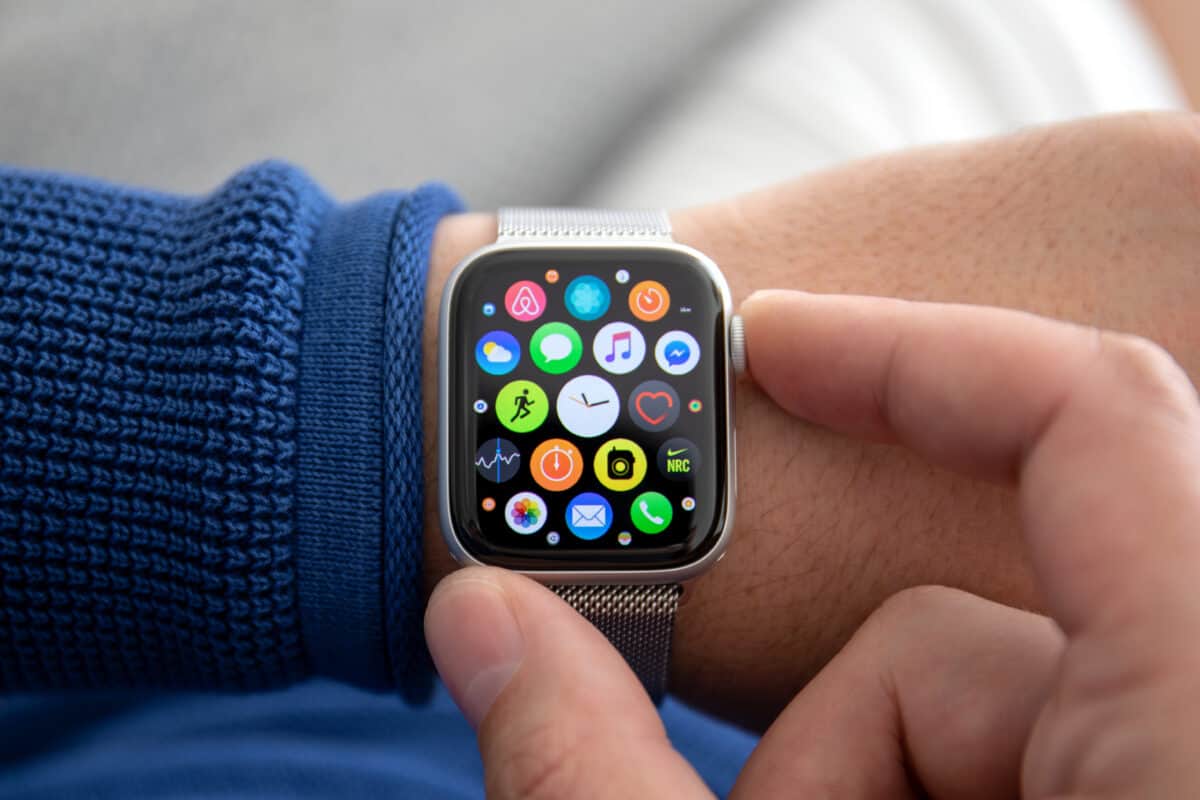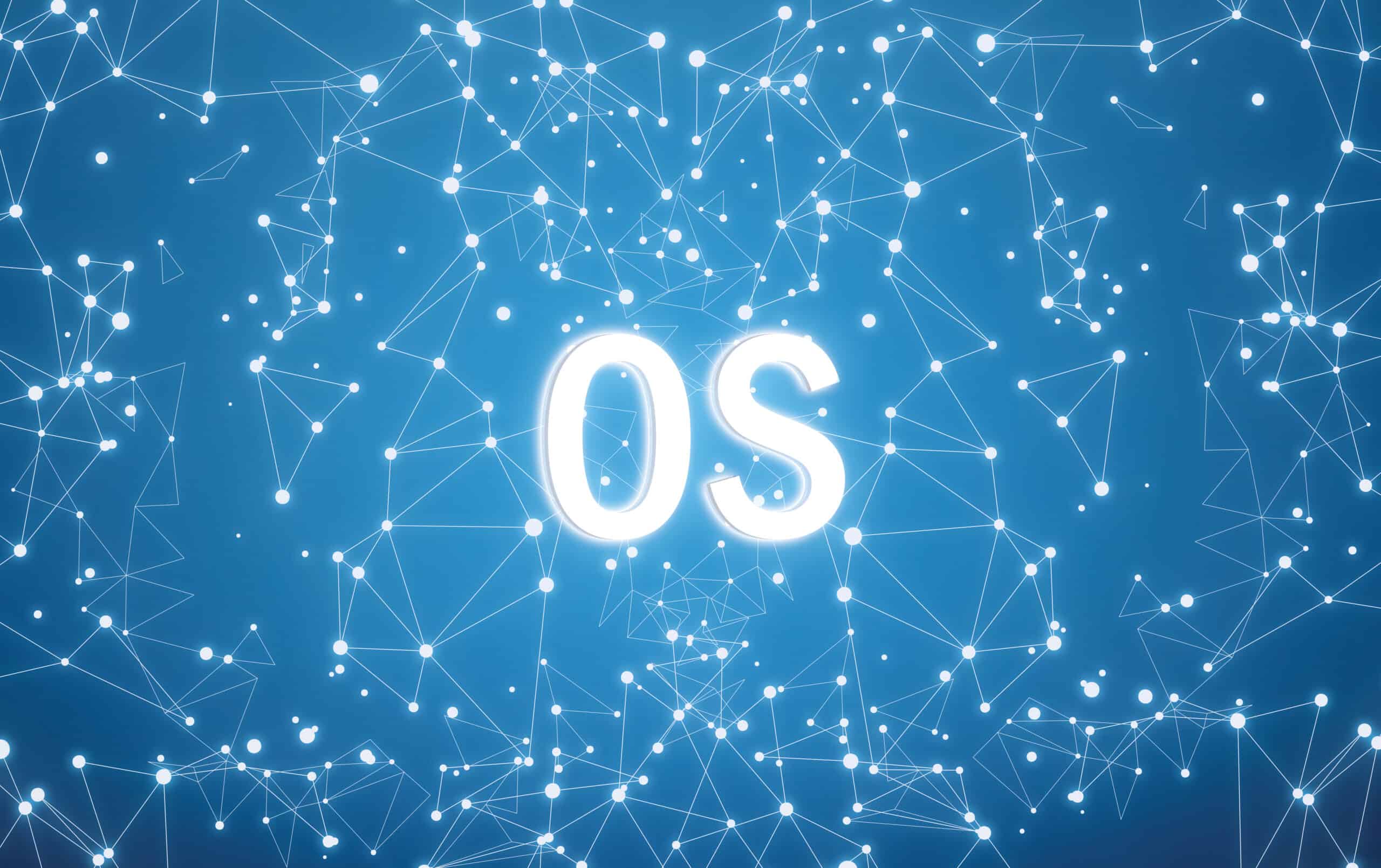When thinking about the history of computers, you have to consider operating systems. If you’ve used a video game console, or computer or own a Smart TV, you have experience with an OS. Operating systems help run the world around us, and have come a long way since the days of Windows 1.0 and the Lisa OS. With that in mind, we’re going to take a look back at the past and the history of operating systems.
6 Facts about Operating Systems
- The Xerox Star workstation has the first commercially produced GUI.
- All original 128K Macintosh PCs have engraved signatures inside.
- Windows 1.0 is the longest-supported version of Windows as support ended in 2001.
- You can find versions of Linux on spaceships and supercomputers.
- The first commercial smartphone to run Android is the HTC Dream.
- The first laptop with a trackpad was the Apple PowerBook 500.
What is an Operating System?
An operating system is defined as a program that serves as an interface or manages computer hardware. When you turn on a PC, the operating system loads during the startup process and begins to issue commands to various components.
An OS allows the components of a computer to interact with one another, but can also act as an interface for the end user. Most people are familiar with the operating systems used on home computers or gaming consoles, but there are different types of operating systems including embedded OS designed for dishwashers, HVAC units, vehicles, and ATM machines.
Many believe that operating systems have only been around since the first microcomputer the MITS Altair. That’s not the case, however, as the history of operating systems goes back to the 1950s, well before components like solid-state drives and CD-ROMs were available.
The History of Operating Systems
Early computers were impressive but limited in how many programs they could execute. They had no traditional operating system and relied on punch cards or punched tape. That served as a form of input for early systems of the 1950s.
This system was tedious but effective as there were no real programming languages at that time. One of the more famous uses of this early tech was by English mathematician and computer scientist, Alan Turing. Often referred to as the “father of modern computer science” Turing’s work helped code breakers in WW2 through the Enigma Machine. He is also responsible for the Turing Test, a test used as a guideline to determine artificial intelligence.
Mainframe computers with vacuum tubes and transistors replaced punched tape with another system – magnetic tape. These systems worked with batches of magnetic tapes and drives which increased efficiency but were still a long way from modern operating systems like Windows or Linux. These large mainframes were located in a dedicated, climate-controlled room and required operators. General Motors Research Division introduced one of these early “operating systems” in 1956 for the IBM 704.
While the GM-NAA I/O operating system was designed for GM, the IBM 704 is more well-known for entirely different reasons. The song Daisy Bell was synthesized using an IBM 704, and a writer named Arthur C. Clarke happened to be visiting Bell Labs during a demonstration. 6-years later, that tune was immortalized by HAL 9000 in Stanley Kubrik’s 2001: A Space Odyssey.
That song was a precursor of things to come thanks to integrated circuits. These circuits helped bring the size and cost of computers down and led to the age of personal home computers. This is where modern operating systems came into play as the microcomputers of the 1970s made way for the home computers of the 80s.

Operating Systems of the 70s and 80s
MITS may have produced one of the earliest PCs with the Altair, but it was far from a commercial success. The same can be said for the Xerox Alto, which is the first personal computer with a mouse and GUI. Those early PCs and their operating systems laid the groundwork for future generations including the “Trinity” of Apple, Tandy, and Commodore in 1977.
What operating system your PC ran in those days varied considerably. TRSDOS or Tandy Radio Shack Disk Operating System was introduced for the Tandy TRS-80 while NewDos/80, a third-party OS developed by Apparat ran on the TRS-80 Model III. That operating system is not to be confused with Apple DOS or MS-DOS, which arrived in 1981.
Apple’s first attempt at a traditional operating system was born with the Lisa PC. This desktop computer was designed for businesses initially but had a GUI and a mouse. The Lisa was not designed for games like Through The Looking Glass, however, which showed users what was capable with a simple GUI.
In 1984, Apple introduced the Mac OS System 1 as the first operating system for Macintosh computers. Apple kept the software alive through 9 generations ending with Mac OS 9.2.2. That was the last version of the classic Mac OS before Kodiak rumors began for Mac OS X. On the opposite end of the spectrum was Microsoft, which launched Windows 1.01 on November 20, 1985.
Their first graphical OS should have arrived several years earlier but was pushed back because of various modifications from IBM and Microsoft. They released new versions frequently, although the company didn’t include VGA or PS/2 support until 1987. Like many early operating systems, it wasn’t exactly well-received. That changed with Windows 3.1, however.
While there were a number of third-party operating systems available throughout the late 70s and early 1980s, this is where two companies, Apple and Microsoft, emerged as leaders in the field while others fell by the wayside.
Modern Operating Systems
It’s been more than 40 years since the history of operating systems began, and in that time we’ve seen several new companies enter the field. That’s due in part to new devices, which require an operating system including smart appliances, TVs, and mobile phones.
Windows
You won’t find Windows running on any PCs from Apple, but the operating system has been a mainstay in popular culture since its inception. Microsoft Windows was created as a GUI for MS-DOS. The closed-source software has gone through too many revisions to count. Windows NT was the first OS from Microsoft based on a hybrid kernel with several versions until Windows 95 launched.
That version has a redesigned interface featuring a number of improvements but paled in comparison to Windows XP. Windows XP was the next step for Microsoft with a new UI and Star Menu. Marketed in two versions with Home and Professional editions, the OS remained popular and installed on millions of PCs until Windows Vista in 2006.
Windows Vista wasn’t as well-received as some of the other versions of the operating system. Microsoft launched Windows 7 as an upgrade and brought multi-touch support to the masses. Windows 8 shook things up in the design department. It was the beginning of the company’s “Metro” design language, which you could find across their PC lineup along with mobile devices.
Windows 10 also brought plenty of changes to users in 2014 and brought back the virtual desktop. The latest version of the operating system, Windows 11 arrived in 2021, but support for Windows 10 extends through October 2025.
Mac OS/X
Using an Apple computer is an entirely different experience from using a PC that runs Windows. It wasn’t always that way, but the gap has widened significantly between early Macintosh System Software from Apple and macOS Venture, which arrived on June 6, 2022.
The first versions of Apple’s operating system include Apple DOS, ProDOS, and Apple SOS which came with the Apple III home computer. While the Lisa caught the world’s attention in 1983, the Mac OS arrived in 1984 and shook up the industry. The original version was based on the Lisa OS while System 2.0 included support for AppleTalk. System 4.0 shipped with the Macintosh SE which was an upgrade from the Macintosh Plus.
System Software 5 from Apple hit the market in 1987 with three bootable disks with system tools and utilities. It was the first operating system from Apple to include MultiFinder, a new extension that allowed multitasking.
System 7, otherwise known as Mac OS 7 was the first substantial upgrade in the series from a graphical standpoint. Virtual memory support, cooperative multitasking, and an extensions manager were other major improvements. In 1997, Steve Jobs took over as CEO of Apple and the company introduced Mac OS 8.
The macOS line has been active since 2001 and is still going strong today. While it’s second in terms of user numbers compared to Windows, the Unix-based operating system runs on millions of desktop PCs and laptops.
Linux

Both Windows and macOS are closed-source compared to Linux, the first widely adopted modern open-source program in the history of the operating system. Based on the Linux kernel, the first version of this operating system arrived in 1991 by Linus Torvalds. The GUI is unique but should be familiar to users of Windows or Macintosh computers.
Linux has been around since the 90s but didn’t begin to gain ground until companies like IBM and Dell took notice. Linux adoption has grown steadily over the past few decades. It’s no longer only used in Supercomputers or on systems built by hobbyists. Some of the more popular Linux distributions are Fedora Linux, Debian, and Ubuntu.
Ubuntu is based on Debian and has its own fanbase. Android is also based on Linux, along with more than a dozen operating systems. Some of the companies that utilize Linux are Samsung, LG, and Toyota. If you’ve used a Chromebook from Google, you’ve used a Linux-based operating system as well.
Mobile Operating Systems
As technology has progressed, components have grown smaller leading us into the mobile age in the history of operating systems. A mid-range smartphone from Samsung is more powerful than any classic PC from the 80s. People today people can carry around computers in their pockets. Those portable PCs still rely on an operating system, however.
The debate between Android vs. iOS grows stronger each year, especially since Microsoft got out of the smartphone business. Windows 10 Mobile was the last generation of that platform’s operating system. By comparison, more than half the smartphones on the planet run some form of Android.
The Open Handset Alliance developed Android. Google sponsored the project, which is why you’ll find the name largely tied to their services, although most of the components are open-source. That means manufacturers can use the kernel to build their own OS or use a forked version of Android on their handset with slight modifications.
That’s why you see Android smartphones from dozens of manufacturers compared to iOS. The only devices running that OS are from Apple. They introduced iOS with the first generation of the iPhone in 2007, a year before Android. It’s the operating system found on every iPhone with variations for the iPad, Apple TV, and the Apple Watch.

The Apple Watch runs on the iOS operating system.
Every version of Apple’s OS features the same design language whether you’re using the Apple Watch SE or a new iPad.
Conclusion
As you can see, operating systems are a vital part of computers, smartphones, video game consoles, and other gadgets. You wouldn’t get far without trying to navigate through menus on a PlayStation 5, even if most operating systems fall into a few simple categories today. If you’re just getting started and want to learn more about the differences between major operating systems, check out our comparison of Windows, Mac, and Linux.
The image featured at the top of this post is ©iStock.com/Guillaume.

